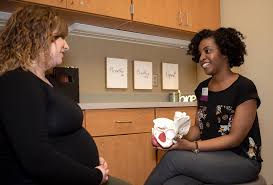- 5457 Twin Knolls Rd. Suite #300
Columbia, MD 21045 - Call Us
443. 979.7550 - Open Hours
Monday - Friday: 7:00AM - 6:00PM (by appointment)

Pelvic floor physical therapy involves the pelvic floor muscle group, which is responsible for a variety of functions. These muscles support the pelvic organs, assist in bowel and bladder control, and contribute to sexual arousal and orgasm. A person may be referred to pelvic floor physical therapy to treat incontinence, difficulty with urination or bowel movements, constipation, chronic pelvic pain, and/or painful intercourse.
Women may see a pelvic floor physical therapist for treatment of vaginismus or endometriosis. Male disorders, such as painful ejaculation and premature ejaculation, can also be treated this way.
Pelvic floor physical therapists use several techniques:
Pelvic floor physical therapy may be part of a treatment plan involving primary care physicians, sex therapists, and mental health professionals.

Wondering what we can do during a lactation consultation? Here is an outline of common concerns that our lactation consultant can address with you:

For centuries, women across the globe have used vaginal steaming to assist with postpartum recovery. This practice is experiencing a resurgence in popularity in the US but obstetricians and gynecologists remain largely unfamiliar with the practice and are unequipped to provide informed advice to their patients on its safety and efficacy. For this reason, clinical studies on vaginal steaming are in high demand. The following study was designed to provide a foundational exploration of the impact of vaginal steaming on a number of postpartum healing indicators. The study’s findings indicate that vaginal steaming has a positive impact on a number of postpartum healing indicators, including blood pressure, pulse, uterine restoration, reduction of weight and waist size, healing of tears, gapping and swelling, the expulsion of lochia, bowel regularity and hemorrhoid reduction.
